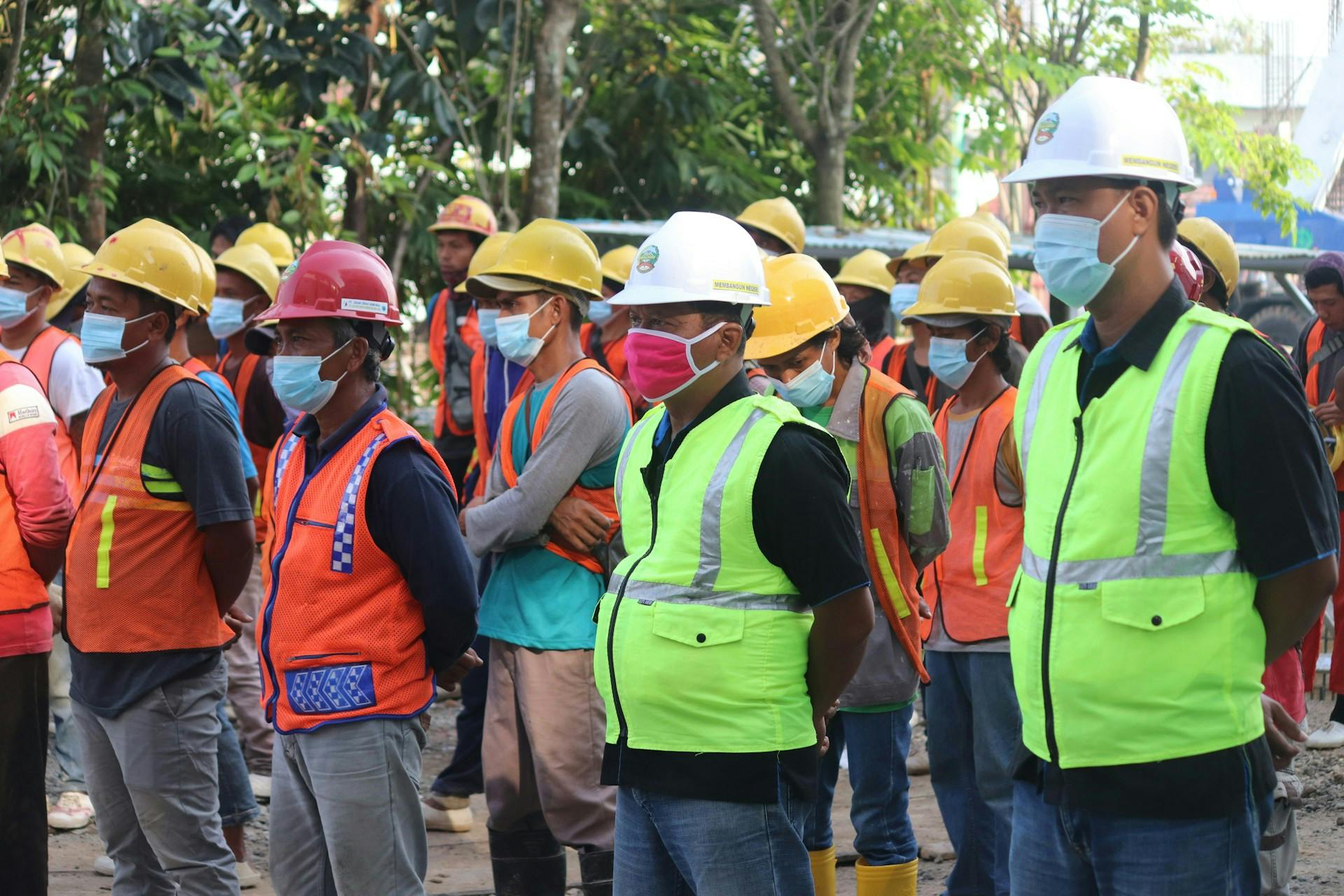How to Manage Multiple Teams: Strategies for Success


Learning to manage multiple teams effectively is non-negotiable, especially in complex organizational structures. When organizations grow, three main challenges crop up for leaders managing multiple teams: communication gaps, resource conflicts, and team cohesion issues.
Teams working separately or in different locations often create information bubbles. Work gets duplicated, messages get mixed, and confusion sets in. Resource distribution becomes a tricky balancing act with competing priorities and different work approaches. And perhaps the toughest challenge? Building unity among diverse teams, especially when they rarely see each other face-to-face.
Tackling these issues takes more than basic leadership skills. You need targeted strategies and the right tools to bridge gaps, distribute resources fairly, and build a shared identity that works across team boundaries.
In this article, you'll discover practical solutions for managing multiple teams effectively, whether you're coordinating teams across departments, managing remote workers, or overseeing international offices. Mastering multi-team management isn't just good for business—it's necessary for creating a workplace where people actually want to be.
The Modern Manager's Role in Managing Multiple Teams
Being a manager today means much more than direct oversight. Managing multiple teams involves balancing hands-on leadership with big-picture thinking, connecting teams while protecting their independence. The impact of good management can't be overstated. Gallup's research shows managers influence up to 70% of team engagement—a direct line to performance and results.
Successful multi-team managers share these important traits:
- Adaptability: Shifting approaches based on what each team needs.
- Clear Communication: Making sure information flows smoothly, not getting stuck in silos.
- Cultural Awareness: Reading the room across different team cultures and work styles.
- Technological Proficiency: Using digital tools to keep everyone in sync.
Think of managers as bridges connecting islands of expertise. They facilitate knowledge sharing and help teams see how their work fits into the bigger picture. This means creating opportunities for teams to work together and ensuring everyone pulls in the same direction.
Technology has become the manager's best friend. Project management software, communication platforms, and data tools help maintain oversight without micromanaging. For teams in the field, SMS-based systems can be a lifeline, keeping everyone connected regardless of where they work.
Building culture across teams takes intention. Companies like Automattic bring their distributed workforce together for annual "Grand Meetups" that combine work with social time, strengthening relationships and aligning goals.
Smart managers know when to step back. Setting clear targets and providing resources, then letting teams chart their own course to those goals sparks innovation and boosts engagement across multiple groups.
Today's manager wears many hats—strategist, connector, coach, and tech-savvy leader. Master these roles with the right tools, and you'll guide your teams to new heights of collaboration and success.
Common Challenges in Managing Multiple Teams
Leading multiple teams comes with specific hurdles that can derail your best efforts. Managing multiple teams well requires anticipating and addressing these common challenges:
Overcoming Communication Barriers
When teams operate in their own bubbles—whether physically separated or just functionally independent—information gets trapped. This leads to double work, missed chances to collaborate, and inconsistent information flow. Finding effective solutions for bad communication is essential to overcoming these barriers.
The typical communication roadblocks include:
- Missing or repeated information
- Cultural and language differences
- Distance and remote work complications
These issues can cause teams to miss important updates or drown in irrelevant messages. Projects slow down and confusion grows about what really matters.
The solution? Create common communication channels, set up regular cross-team check-ins, and use platforms that bring discussions and updates together in one place. For deskless workers, integrating mobile-first solutions can provide effective deskless worker communication strategies.
Effective Resource Management Across Teams
Dividing resources fairly among teams creates several problems:
- Competing priorities: When deadlines overlap and everyone needs the same limited resources.
- Different ways of working: Each team may follow unique processes, making uniform resource distribution tricky.
- Scattered expertise: Knowledge gets siloed within teams, making it hard to tap into the organization's collective wisdom.
The solution starts with transparent prioritization and standardizing core processes—while still giving teams room to work in ways that suit them best.
Cultivating Cohesion Across Multiple Teams
Creating unity across multiple teams doesn't happen by accident:
- Inconsistent norms: When each team follows different rules, a unified culture becomes elusive.
- Trust issues: Without regular interaction, teams struggle to build the trust needed for real collaboration.
- Geographic and cultural divides: Teams spread across locations or cultures find it harder to connect.
You need deliberate strategies to build cohesion. Cross-team projects, virtual team-building, and clear organization-wide values create the foundation for teams to work together effectively. Tackling these challenges head-on helps build a more unified multi-team environment while honoring each team's unique strengths and identity.
Strategies for Effective Multi-Team Management
Success in managing multiple teams demands thoughtful approaches to communication, resources, goals, and performance:
Standardizing Communication Protocols
Create consistent ways for teams to share information. Set up a rhythm of cross-team meetings—daily communications, weekly updates, and monthly reviews work well for many organizations. Make documentation practices clear and establish who to contact when issues arise. For team members without desks or computers, SMS-based platforms ensure everyone stays in the loop, no matter where they work.
Using Technology Tools for Team Management
The right digital tools can transform multi-team management. Project management software and communication platforms create a virtual headquarters where discussions, updates, and resources live in one place. For non-desk employees, utilizing specific communication tools for deskless workers and exploring various communication app options ensures they remain connected and engaged. Look for tools that work both in real-time and asynchronously, especially if your teams span different time zones. Translation features can help diverse teams understand each other better.
Establishing Clear Objectives and KPIs
Teams need straightforward goals and metrics to stay aligned. The SMART framework creates objectives everyone understands. As management expert Peter Drucker pointed out, "What gets measured, gets managed." Many successful organizations use OKRs (Objectives and Key Results)—a system Google relies on to connect company, team, and individual goals. Good metrics balance hard numbers with human factors like team satisfaction.
Effective Delegation Across Teams
Strengthen your team leaders through thoughtful delegation. Use "cascading goals" where organizational objectives flow down through departments to teams. This approach builds future leaders and spreads accountability. When you delegate properly, you can focus on strategy rather than getting bogged down in day-to-day details.
Applying these strategies consistently, gathering feedback, and refining your approach creates a more connected, efficient multi-team environment.
Best Practices for Leadership in Managing Multiple Teams
Leading multiple teams requires creating conditions where every team can excel. Here are some best practices for managing multiple teams effectively:
Building a Culture of Trust and Accountability
To create high-performance across teams:
- Share information openly with all teams
- Create regular feedback channels where everyone has a voice
- Base performance reviews on clear, fair standards
- Build an environment where people feel safe taking risks
Google's Project Aristotle discovered that psychological safety matters most for team success. When team members can take risks without fear of embarrassment or punishment, innovation and collaboration flourish.
Continuous Skill Development and Mentoring
Investing in your people pays dividends:
- Run ongoing training to keep skills sharp
- Connect mentors and mentees across different teams
- Send team members to industry events and workshops
- Create personalized growth plans for each team member
Studies show that development programs signal that you value employee growth, boosting both retention and motivation. Prioritizing learning upgrades skills while strengthening engagement across teams.
Adopting Adaptive Leadership Practices
Adjust your approach to fit each team's unique needs:
- Recognize each team's maturity level and lead accordingly
- Pay attention to the specific challenges each team faces
- Flex your communication style to match team preferences
- Ask for feedback on your leadership and make adjustments
Research from Eletive shows that "the most successful organizations are those that continually adapt their management strategies to align with evolving team needs." This flexibility ensures you provide the right support at the right time.
With these leadership practices in place, you'll handle the complexities of managing multiple teams more effectively. Stay flexible, build trust, invest in growth, and adapt your approach to meet each team's changing needs.
Connecting Teams Across Multiple Site Locations
As businesses grow and operations spread across cities, regions, or even continents, managing teams across multiple locations becomes a defining part of modern leadership. Whether you're overseeing a warehouse in one area and an office in another, or coordinating field and HQ operations, the challenge is the same: how do you create unity across physical distance?
Multi-location team management isn’t just about logistics. It’s about creating alignment across different work environments, cultures, and rhythms. Doing it well requires thoughtful leadership, clear systems, and communication tools that meet people where they are—especially when some of those people never sit at a desk.
Creating a Unified Culture Across Sites
Just because teams are physically apart doesn’t mean they should feel disconnected. Building a strong culture across locations starts with a sense of shared purpose. That sense of connection doesn’t emerge by accident—it takes intentional planning.
Company-wide initiatives can help create moments of unity. Whether it's a shared recognition program, wellness challenge, or virtual town hall, these efforts signal that every team, no matter where they work, is part of the same mission. Collaboration across sites should be more than a checkbox; assigning cross-location projects gives employees a reason to connect and learn from each other.
To support this cohesion, it’s important to create communication channels that work for everyone. This includes teams working night shifts, weekends, or in entirely different time zones. Ensuring that everyone has access to timely updates and a space to be heard reinforces inclusion across the board.
For businesses in industries like logistics, construction, and manufacturing—where many workers don’t have email access or a company laptop—engagement requires extra care. That’s where mobile-first communication strategies come in. These allow all employees, especially non-desk workers, to feel part of the bigger picture and stay informed without needing to rely on traditional tech.
Leveraging Technology to Bridge the Distance
Technology is the great equalizer in managing multi-site teams. Platforms like Slack and Microsoft Teams create virtual workspaces that bring team discussions, updates, and documentation together. These tools can act as the digital heartbeat of the company, helping everyone move in sync no matter where they’re located.
For teams in the field, the usual digital tools often fall short. Frontline employees may not use apps or log into dashboards during their shifts. That’s where mobile-first solutions like Yourco are especially powerful. By using SMS to communicate directly with employees, companies can send urgent updates, share safety information, and deliver HR announcements without requiring downloads, passwords, or tech support. This simplicity increases reach and trust—two elements that are critical for effective communication in dispersed teams.
Maintaining Connection Across Locations
The most successful multi-location organizations don’t just rely on tech—they combine it with strong leadership habits. Setting clear expectations for communication, documenting important updates, and creating space for team feedback all contribute to a workplace where everyone feels seen, heard, and aligned.
Recording key meetings, keeping shared documents up to date, and centralizing knowledge in accessible hubs ensures consistency, even when people work in different cities or on different schedules. At the same time, recognizing the uniqueness of each site—its people, its challenges, its wins—builds respect across the organization.
Embracing Cultural and Operational Differences
Leading across locations also means navigating different work cultures and operating styles. A team in one location may speak a different language or operate under different compliance rules than another. Providing cultural awareness training, encouraging mutual learning, and using translation tools when necessary can go a long way in building mutual understanding.
The best platforms do more than enable communication. They shape culture. When everyone—from warehouse supervisors to remote engineers—has a voice and a clear way to contribute, location stops being a barrier and starts becoming a source of strength.
The Power of Tech in Site-to-Site Communication
Technology isn’t just a nice-to-have for multi-location teams—it’s a core enabler of clarity, speed, and unity across sites. As teams grow more dispersed, so do the chances of misalignment. Without the right tools, communication gaps widen, especially between headquarters, frontline workers, and shift-based teams.
The right tech bridges these gaps by delivering information quickly and consistently. It ensures that whether someone is in a satellite office, a field site, or working an overnight shift, they receive the same timely, accurate updates.
Some of the key benefits of using technology for site-to-site communication include:
- Instant message delivery across teams and shifts, ensuring updates reach everyone simultaneously.
- Streamlined communication from HQ to every location, reducing misinterpretation or message delays.
- Simplified onboarding and HR documentation, enabling faster, more consistent employee ramp-up across sites.
This is especially important in industries like manufacturing, logistics, retail, or construction—where many employees don’t sit at desks or check emails regularly. These workers need tools that adapt to their workflows, not the other way around.
Mobile-first platforms are especially powerful in this context. Yourco, for example, enables organizations to send messages directly to employees’ phones using SMS. No app, login, or internet access required. Teams can receive safety alerts, schedule changes, training materials, or HR forms—instantly and in the language they prefer.
This level of accessibility doesn’t just improve communication. It fosters a sense of inclusion and ensures that no team, shift, or location is left behind. When the flow of information is seamless, performance improves, and employees feel more connected to the larger mission—regardless of where they work.
Unleash Your Teams' Full Potential
Managing multiple teams successfully comes down to connecting people, creating systems, and leading with purpose. Throughout this article, we've explored strategies that can transform how your teams work together—especially when those teams are spread across departments, shifts, or physical sites.
Communication forms the foundation of multi-team success. When you create unified channels and consistent protocols, you break down silos and ensure information flows smoothly. Smart resource allocation, meanwhile, demands transparency and a deep understanding of what makes each team tick.
We’ve seen how purposeful efforts to build team cohesion translate into better performance and stronger engagement. Trust and respect for differences create environments where collaboration is organic and innovation flourishes. But these outcomes don’t just happen. They rely on both strong systems and thoughtful leadership.
Take a moment to reflect on your current approach. Which area needs immediate attention—communication, resource clarity, or team alignment? Even small improvements in these areas can radically change how your teams perform together.
Yourco: Built for Multi-Location Management
For organizations managing a dispersed or deskless workforce, Yourco provides a purpose-built communication solution that eliminates friction and builds unity—without requiring apps, internet access, or IT intervention. As the #1 SMS-based employee app, Yourco meets employees where they already are: their phones. With a 98% read rate and a 90-second average response time, it's one of the most effective ways to keep teams in the loop.
But Yourco isn’t just about sending messages. It's built for the complexities of multi-location operations, where fragmentation, reporting inconsistencies, and visibility gaps are common pain points. Here's how Yourco addresses them:
- Centralized Dashboards give leadership a unified view of performance, communication activity, and compliance across every site.
- Location-Specific Insights allow teams to zoom in on local trends, identify bottlenecks, and tailor support based on what each site actually needs.
- Customizable Reporting lets stakeholders segment data by role, region, or department—ensuring every decision is grounded in relevant, timely insights.
- Real-Time Alerts and Trends notify leadership of emerging issues before they escalate.
- Data-Driven Decision Support enables managers to act strategically—standardizing processes, reallocating resources, and improving consistency across locationsYourco Company BriefYourco Built for Enterp….
Combined with Yourco’s built-in features like AI-powered translations, permission-controlled access, and secure documentation, these analytics tools help organizations move from reactive to proactive management—without overcomplicating workflows or overwhelming teams.
Yourco scales effortlessly from a single site to dozens, offering both corporate-wide messaging and localized communication autonomy. It’s as effective for a 500-person manufacturing plant as it is for a nationwide logistics operation with hundreds of field locations.
Ready to see how communication can drive alignment, accountability, and performance at scale?
Try Yourco for free today or schedule a demo and see the difference the right workplace communication solution can make in your company.



